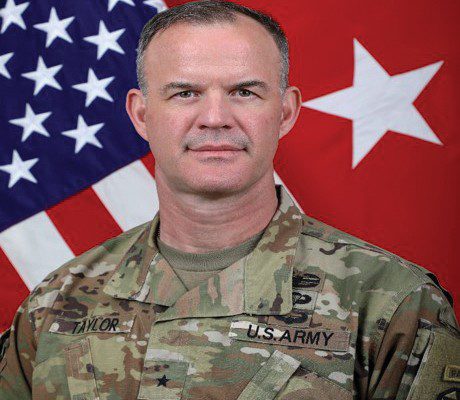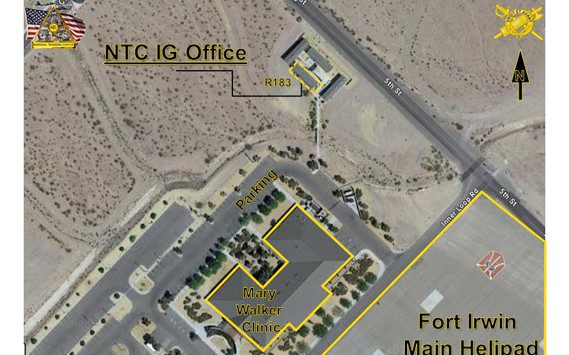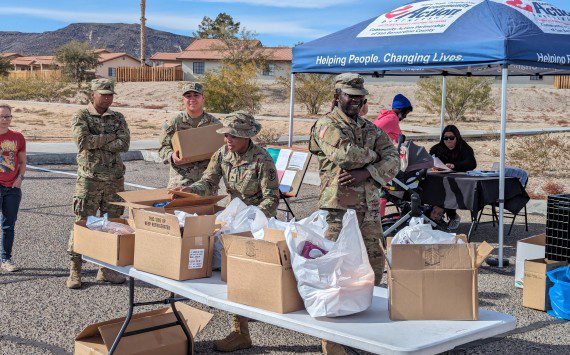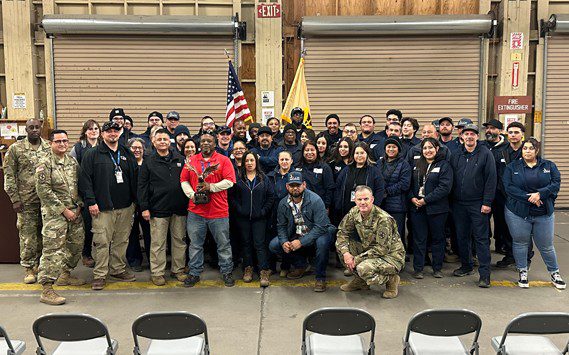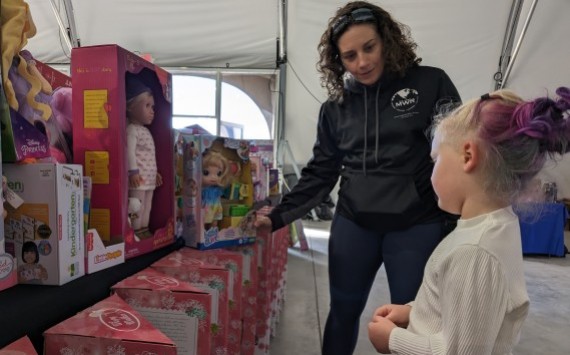Thank you for being here and celebrating this important milestone as we mark the conclusion of the 400th rotation here at the National Training Center.
From our first rotation in 1981 this installation has been dedicated to one solitary purpose— to win the first fight of the next war.
We do this by serving as the nation’s premier, combat leadership laboratory— an intense crucible where every Soldier who has had the privilege to lead here has left this place better able to cope with the immense challenge of sustained combat operations.
Our Army’s consistent success at the tactical and operational level first in Kuwait, then in Bosnia, then Afghanistan and Iraq were directly related to our decision here at the NTC 41 years ago to create the most realistic combat training environment that the world has ever seen.
Even today, as our hearts break to watch Afghan mothers handing their babies over the fence to American soldiers in Kabul, we can take hope. It is the enormous confidence and trust that the world has in the American Soldier to bring order to chaos in the world’s darkest corners that reaffirms our place as the finest Army in the world.
That confidence is borne out of tough, realistic training that starts right here at the National Training Center.
As the character of warfare has evolved over the last 41 years so has the NTC. One of those critical phases of our evolution was in 2004 as a conventional fight in Iraq rapidly metastasized into a full-fledged insurgency.
Fortunately that same year, the Army selected Gen. Bob Cone to be the 15th Commanding General of the National Training Center.
General Cone had just served as the Director of the Joint Lessons Learned Collection Team. There, his mission was to identify lessons learned at the tactical and operational level in both Iraq and Afghanistan.
With this experience, he led a transformation across his 33-month tenure as Lead 06 from a focus on large-scale combat operations to counter-insurgency.
– He deployed Observers into theater to capture lessons learned so they could be adapted to our scenarios.
– He accelerated construction on 14 urban sites across the box which now number over 1,200 separate buildings to replicate complex, urban terrain.
– He hired role players to provide both a language barrier and a complex social and political dynamic to each combat scenario.
– Most importantly, he educated our trainers and our Army on the best practices of counter-insurgency efforts across the world.
– It was here, at the NTC, where the conditions were set and the foundation laid for what we now know today as the Sunni awakening and the surge in Iraq that ultimately broke the back of the insurgency.
It is fitting that we dedicate this heritage center to General Cone and his legacy which has been so intertwined with the history of the NTC.
We are fortunate to have Jill Cone with us; she has been the consummate Army spouse and better half of Team Cone for more than 30 years.
Jill — there are many here on this post with fond memories of you and your husband because of your love for and dedication to this community.
This Heritage Center has been significant investment for many of the folks here and I want to take a minute to thank just a few of those who made this possible.
First, I’d like to thank retired Col. Bill Wilson our first OPFOR commander from back in 1986.
Bill has done more than probably anyone I know to record and preserve the history of this great training center.
Second is our Curator, Mr. Ken Drylie along with all of the folks at G3 Training Support Jeff Loper, Kevin Teal, Trish, Robert, Rodney, Cisco, Todd and Cindy who have worked for months to put this together.
I’d also like to thank the soldiers from 916th, Operations Group, and 11th ACR who invested so much into building quality displays to record their history.
Finally, I’d like to thank Jill again for allowing us to take a U-haul’s worth of your husband’s history from your home and preserve it here in this great facility.
The NTC continues to adapt with the changing character of warfare.
Our focus today is on large scale combat with near-peer adversaries in the most complex environments imaginable.
We are adapting to a world where cyber reconnaissance, electronic warfare, and lethal drones are an ever present threat.
Our goal now is now different than it was on that first rotation back in 1981— to build the discipline and habits that will allow our soldiers to win the first fight of the next war.
As we prepare for the future, it is important for us to remember our past and this Heritage Center will enable us to do just that.
Lead-Train- Win!






